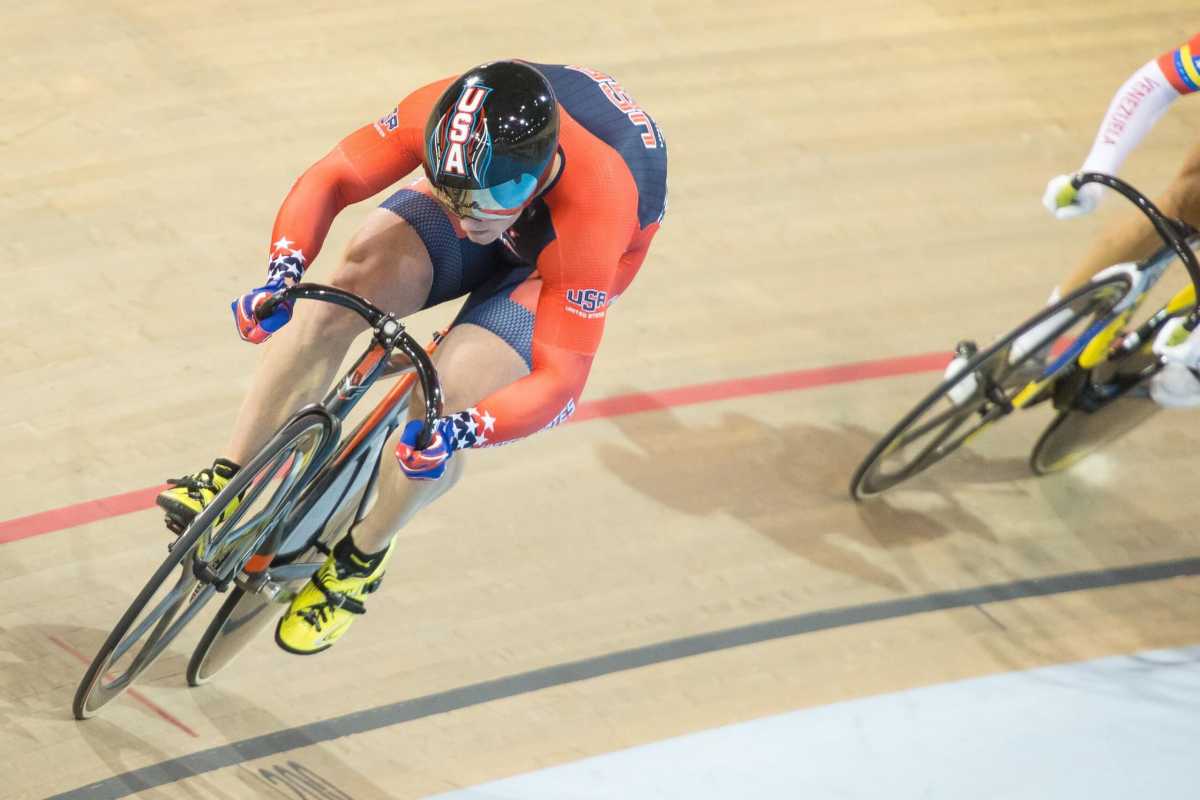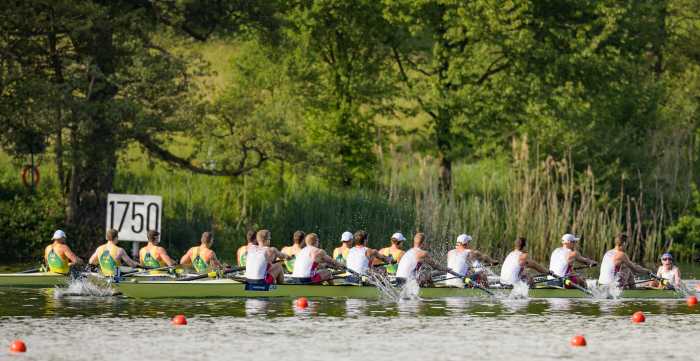Don’t feel bad if you don’t know what — rather than who — keirin is. Not many Americans do.
But Perkasie’s Matt Baranoski hopes that will change Aug. 16 when he competes in the 2,000-meter keirin cycling event in the Olympics.
“It’s probably the most fun you can have on a bike,” said the soon to turn 23-year-old Baranoski, who started racing at 6 when he used to tag along to see his older brotherChriscompete. “It’s six guys lined up standing clipped onto a bike. Each guy has a holder to push him off to start the event. “Then a motorcycle will come around at around 22, 23 mph. We’ll all settle in behind the motorcycle, but we’re not allowed to pass it. The motorcycle gets the speed up to around 31 mph by end of five-and-a-half laps, then he pulls off the track and the race is on.” Got all that? Over the ensuing two-and-a-half laps — with each lap being 250-meters long (that’s 625 meters total) — the riders will engage in a sprint to the finish.
“It’s very much strategic,” explained Baranoski, who returned in May from two months training with the Canadian Olympic team in Milton, Ontario, because he had a strong relationship with Team Canada coach Erin Hartwell. “You can jockey for position when the cycle’s on the track.There’s a qualifying round with four heats of six, followed by the semifinals. The entire event is the same day.” Which means Baranoski and the rest of the keirin field will have 11 days between the Aug. 5 Opening Ceremonies and the race. But don’t expect them to spend that time touring Rio, on the beach or watching the rest of their fellow Olympians in action. “It’s the Olympic Games,”he explained. “It comes once every four years. It’s not something you want to go into tired and have any excuses we’re not gonna do well.
“I doubt we’ll see anything unless there’s something in the area where it wouldn’t take much out of us. Fortunately the velodrome [where cycling events are held] is in the Olympic complex, less than a mile away, so we don’t have to worry about transportation.” RELATED LINK: Phillies All-Star break superlatives
Baranoski doesn’t seem particularly worried about the Zika virus, and his mother, Linda, and girlfriend, Liz, will be there to watch him.
“I think they’re concerned a little bit, but not terribly much,” said Baranoski, who came up short in his bid to make it to London in 2012. “Since it’s winter in Rio, I think the mosquito population [spreading the virus] will be a little less than it is now.And I’m not concerned at all. I am well taken care of by the Olympic committee. I’ve been to a lot of similar countries like Mexico and Colombia, so this is nothing new for me.” Since making its debut in Sydney in 2000, keirin has been an Olympic fixture, with a women’s event added in 2012. The U.S. has yet to earn a medal, though Baranoski, who took home the bronze in the 2015 keirin World Cup and finished second in World Cup standings, says don’t rule him out. “I’m definitely the underdog,” he conceded. “but I do have couple of World Cup medals and have proved I can be a contender.My goal is to make the final and anything can happen from there.” But first there’s work to be done.
“There’s a lot we have to do before we get there,” said Baranoski, who leaves for Brazil Aug. 3. “A typical training day for me my first workout is at 9 a.m. — three hours either on the bike or in the gym. Rest for a few hours, then back on the bike from 4:30 to7:30. “Going to the Olympics I don’t’ think it’s really sunk in that I’m going. I think it will sink in walking into opening ceremonies.”
As for the closing ceremonies, that’s a different story.
“I won’t be there for closing ceremonies,” he revealed. “I’m studying at Penn State to be an electrical engineer. I took two years leave of absence to do this, so I come home the day after I race and have to be in class four days later.” And just maybe the man from Perkasie who’ll compete in the event nobody knows about will have a shiny new medal to show his classmates.
Perkasie’s Matt Baranoski, Rio bound, looks to put keirin on the map

Getty Images


























